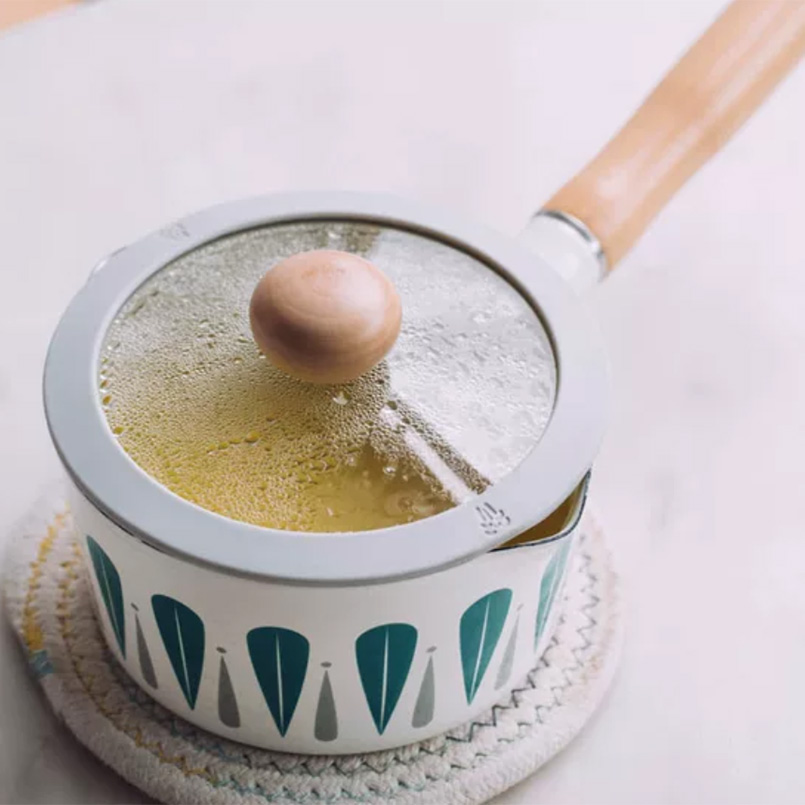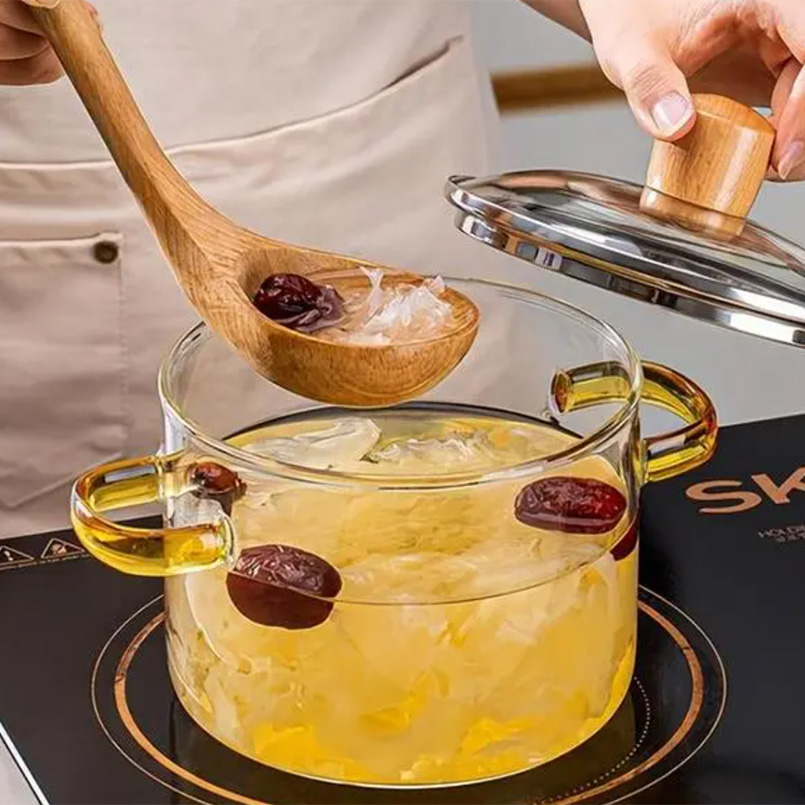Cookware has changed dramatically over the years due to cultural influences, technological advancements, and changing cooking preferences. Europe, America and Asia represent three distinct regions with different culinary traditions and consumer preferences. This article takes an in-depth look at the current cookware trends observed in these regions, revealing the main materials, designs and cooking techniques used.
European Cookware Trends:
Europe has a rich culinary tradition and its cookware trends reflect a balance between tradition and innovation. One notable trend is the preference for stainless steel cookware. Cookware with stainless steel induction base distributes heat evenly and is easy to maintain. Additionally, copper cookware has long been a favourite in European kitchens, valued for its excellent heat conductivity. The popularity of cast iron cookware such as Dutch ovens and skillets is also worth mentioning. These heavy-duty pieces hold heat well and are versatile enough for a variety of cooking methods from stovetop to oven. In Italy, traditional cookware such as copper pots and pans are highly valued for their excellent heat conductivity and ability to control temperature.
This is essential to achieving precise cooking results in Italian cuisine, where delicate sauces and risottos are common. Italian brands such as Ruffoni and Lagostina are known for their high-quality copper cookware. France is renowned for its culinary expertise and French cookware reflects this passion for gastronomy. French brands such as Mauviel is known for their high-quality copper cookware, favoured for their excellent heat management capabilities. French cast-iron cocottes (Dutch ovens) are also revered for slow-cooked dishes such as beef bourguignon. When it comes to design, Europe is known for its focus on aesthetics and craftsmanship. Cookware with vibrant colors, enamel finishes, and intricate details is often sought after. Classic designs, such as the French cast-iron skillet or Italian nonstick, remain popular choices among European cooks. Additionally, ceramic cookware has grown in popularity in recent years for its decorative patterns and usage for versatility. European kitchens also value multicookers, such as pots with built-in strainers or saucepans with removable handles, in response to the need for convenient and space-saving solutions.
European cooking techniques tend to blend traditional methods with modern culinary innovations. The art of slow cooking, with dishes like wine rooster and goulash, is still revered today. However, the prevalence of quick and efficient cooking methods such as frying and sautéing, reflects widespread changes in lifestyles and the need for time-saving solutions.


American Cookware Trends:
The US cookware trend is characterized by its influence of diverse cooking environments and convenience-oriented cooking methods. Known for its durability and versatility, stainless steel cookware occupies an important place in American kitchens. Nonstick cookware is also widely used due to its convenience and ease of cleaning. Aluminium cookware is known for its excellent thermal conductivity and is often coated with a nonstick surface or anodized for added durability. In recent years, there has been a growing interest in eco-friendly cookware materials. Ceramic and porcelain-coated cookware are often marketed as "green" alternatives, gaining popularity due to their non-toxic properties and ability to distribute heat evenly.
Likewise, cast iron cookware, which consumes less energy and is durable, is making a comeback in American kitchens. In design, American kitchens tend to prioritize functionality and practicality. Multi-purpose cookers, including combination cookers and Instant Pot inserts, are highly sought after and fill the need for versatile and space-saving solutions. American-made cookware brands emphasize ergonomic designs and heat-resistant handles for enhanced user experience and safety.
American culinary techniques vary widely, reflecting the country's multicultural nature. However, grilling is ingrained in American culture, and outdoor activities often revolve around these cooking methods. Other popular techniques include roasting, grilling, and slow cooking in a pot. Moreover, growing interest in healthy eating has led to the popularity of air frying and steaming as alternative cooking methods.
Asian Cookware Trends:
Asia is home to a wide variety of culinary traditions, each with its own unique cookware preferences. A prominent trend in Asia is the use of a wok. Often made of carbon steel, cast iron or stainless steel, these versatile cooking vessels are at the heart of Asian cuisine. Woks with wood-effect handle or thermoset handle allow for high-temperature stir-frying and rapid cooking, which is critical to achieving the desired flavour and texture in dishes like stir-fried noodles, fried rice, and various Asian stir-fry dishes. In recent years, cooking methods in Asia have shifted towards healthier practices, which is reflected in the popularity of non-stick pans and ceramic-coated cookware. These materials require minimal oil or grease and are easy to clean.
In India, traditional cooking utensils consist of c0lay pots made of unglazed terra cotta or clay. These pots, such as Indian terracotta tandoors or South Indian clay pots called 'manchatti', are favoured for their ability to retain and distribute heat evenly, lending a distinctive flavour to dishes. Stainless steel appliances are also common in Indian homes due to their durability and versatility. In China, woks are an essential part of the kitchen. Traditional carbon steel woks are valued for their ability to heat quickly and distribute heat evenly, making them ideal for sautéing and frying techniques. Clay pots, known as "soup pots," are used for slow cooking soups and stews. Additionally, Chinese cuisine is known for its extensive use of bamboo steamers, which make steaming a variety of foods, including dumplings and buns, simple and efficient.
Japanese cookware is known for its exquisite craftsmanship and attention to detail. Crafted from high-quality steel, traditional Japanese knives are sought after by professional chefs around the world. Japanese chefs also rely on specialized tools such as tamagoyaki (used for making omelettes) and donabe (traditional clay pots) for hot pot and rice. Japanese cast iron teapots (called tetsubin) are popular for their ability to retain heat and enhance the brewing process. Asian cookware designs often reflect cultural aesthetics and traditions. Japanese cookware is famous for its simple and practical design, emphasizing the beauty of simplicity. On the other hand, traditional Chinese cooking utensils such as clay pots and bamboo steamers highlight the charm of natural and environmentally friendly materials. Technological innovations such as rice cookers and hot pots are also prevalent in Asian kitchens, catering to modern lifestyles and the need for convenience. Asian cooking techniques emphasize precision and skill. Sauteing, frying and steaming are the main techniques that ensure fast and delicious cooking. Using a bamboo steamer to make dim sum or the traditional Chinese practice of double boiling soup are examples of how Asian cooks use specific cookware to achieve desired results. Additionally, the art of wok cooking involves high heat and quick movements, requiring skill and practice that are essential to many Asian culinary traditions.
Europe, America, and Asia have their own unique cookware trends, reflecting their distinct culinary traditions, consumer preferences, and technological advancements. Europe advocates the combination of traditional craftsmanship and functional design, favouring stainless steel, copper and cast-iron cookware. The US has a diverse range of materials, emphasizing convenience and environmental friendliness, while Asia places a strong emphasis on specialty cookware, such as woks and clay pots, for the desired cooking techniques. By understanding these regional trends, individuals can explore new culinary experiences and adopt the right cookware to enhance their culinary abilities.
Post time: Sep-14-2023


